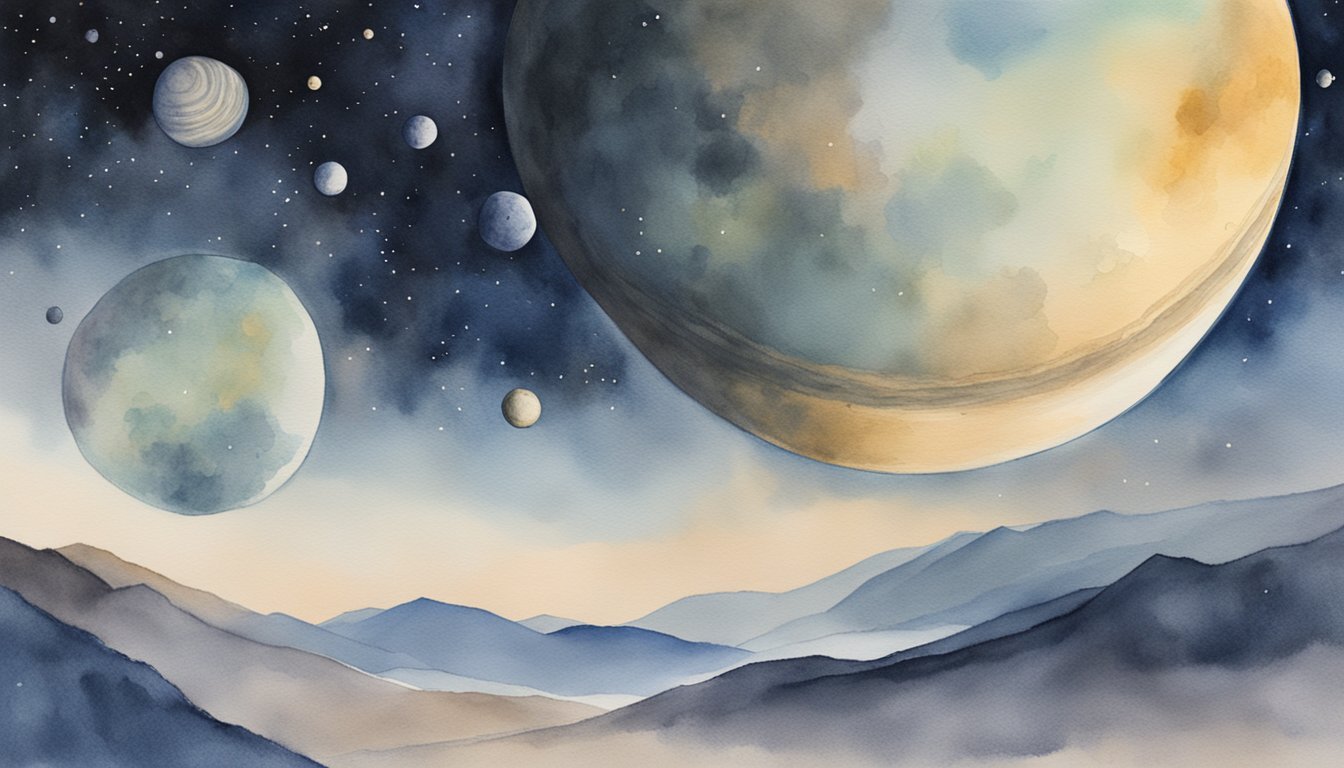Exploring Saturn’s Moons

Saturn’s moons present a rich tapestry of diverse celestial bodies, each contributing to a better understanding of the dynamic processes at work within the Saturnian system.
Physical Characteristics of Saturnian Moons
The moons of Saturn vary widely in size and composition. While Titan, the largest Saturnian moon and also larger than the planet Mercury, is renowned for its thick nitrogen-rich atmosphere, many smaller moons like Mimas and Rhea are characterized by heavily cratered icy surfaces. Saturn’s moons are typically classified into two groups: regular moons, which have prograde orbits close to the plane of Saturn’s equator, and irregular moons, with mostly retrograde and highly inclined orbits.
The Discovery and Exploration Timeline
The timeline of discovery and exploration of Saturn’s moons spans over four centuries, beginning with Christiaan Huygens’ discovery of Titan in 1655. Subsequent observations made using Earth-based telescopes and flybys from spacecraft such as Pioneer 11, NASA’s Cassini spacecraft, and the Hubble Space Telescope have expanded our knowledge considerably. The International Astronomical Union (IAU) continually updates the count of Saturn’s moons as new discoveries are confirmed.
Notable Moons and Their Unique Features
Several Saturnian moons have intriguing characteristics that fascinate astronomers and scientists. Titan stands out with its complex organic chemistry and liquid hydrocarbon lakes. Enceladus grabs attention with its global subsurface ocean and plumes of water vapor that suggest potential hydrothermal activity, a focal point in the search for extraterrestrial life. Even smaller moons like Mimas with its large Herschel Crater, giving it a resemblance to the Death Star from “Star Wars”, add to the compelling nature of Saturn’s diverse moon system. The rings of Saturn also play a role in housing tiny ‘moonlets’ that are continuously monitored to understand their interactions with these iconic features of the host planet.
The Influence of Moons on Saturn’s System
Saturn’s expansive family of moons great and small plays a critical role in shaping the planet’s system. These natural satellites vary dramatically in composition, with some composed primarily of ice, while others are made up of rock. Their diversity has profound effects on Saturn itself, contributing to the dynamics of its atmosphere and surface.
One of the most intriguing moons, Enceladus, exhibits geysers that eject water and dust into space, contributing to one of Saturn’s faint rings. This illustrates the interplay between moons and ring systems, in which moons can be both source and shepherd for Saturn’s iconic rings. Learn more about this moon on NASA Science’s Saturn moons page.
In terms of gravitational effects, moons such as Titan, which rivals the planet Mercury in size, exert a significant gravitational pull. The orbital dance of such large moons can cause tidal forces that may affect Saturn’s poles, potentially leading to shifts or oscillations in its rotational axis over time.
The chaotic remnants of smaller moons and moonlets, possibly shattered from collisions in the early solar system, present as debris in Saturn’s vast ring system. These fragments, along with the gravitational pull from larger moons, help maintain the structure of Saturn’s rings.
Lastly, the variety of moon sizes and compositions offers a window into the building blocks of the solar system, where ice, rock, and gasses such as hydrogen and helium accumulated around a forming core to create the diverse celestial bodies we observe today. Studying these moons can yield insights into the processes that shaped not only Saturn but also the rest of the solar system. For an in-depth exploration, the NASA Solar System Exploration site is an excellent resource.

